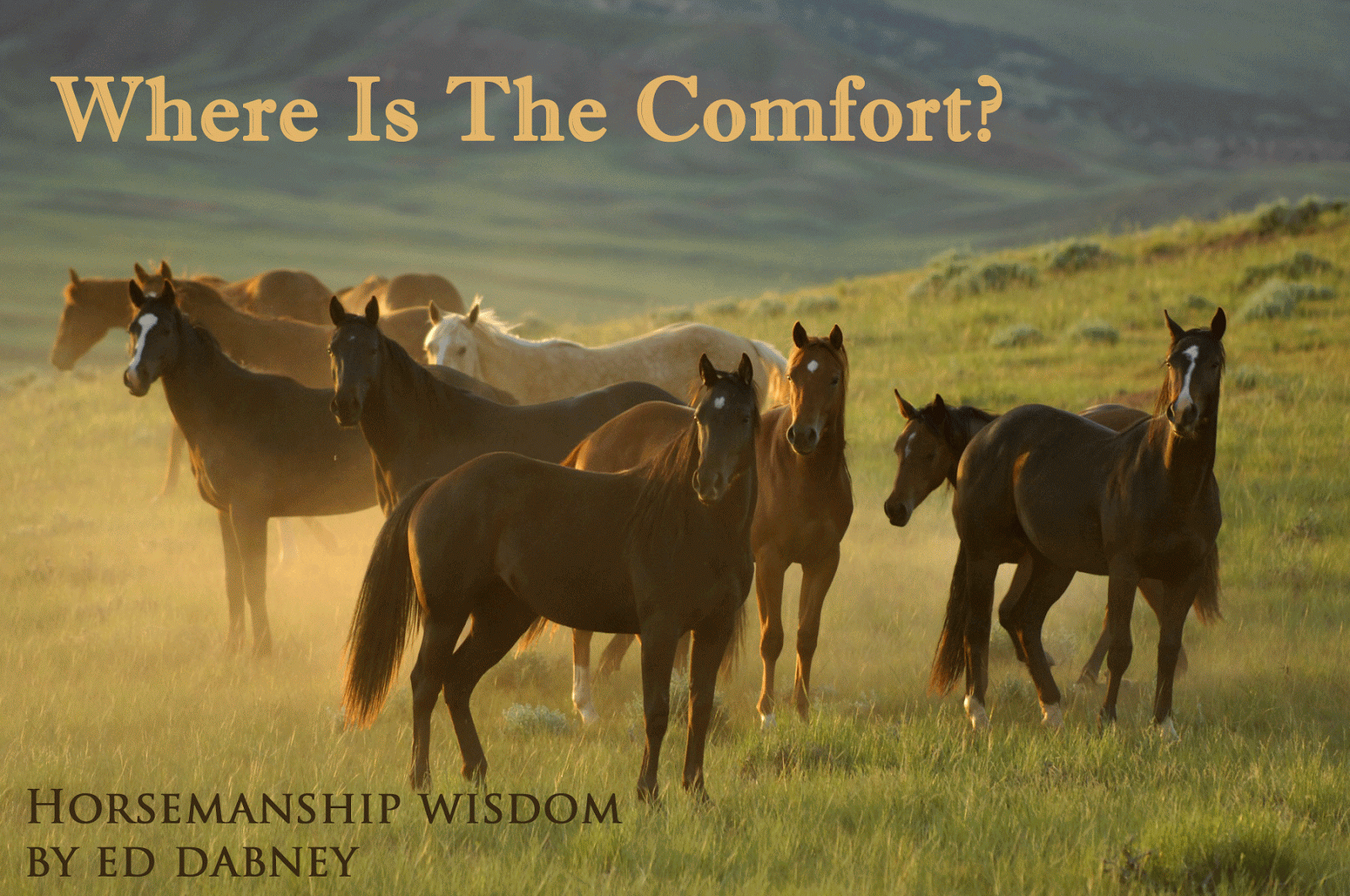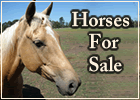

Where is the Comfort?

One of the primary motivators for horses is comfort. They are always seeking comfort. Everything we do with our horses affects their comfort level in some way. When you are riding and simply ask your horse to turn left, you have affected his comfort level by applying pressure from your rein, bit, or leg. You have created a situation of misalignment or off-balance between you and your horse. This is a signal to your horse that you desire a change. You cannot force your horse to turn left if he does not want to, however you have made it a bit uncomfortable for him to continue on a straight line. He has learned through experience that when he feels this particular movement from you, if he turns left he will find comfort once again. Once he turns left the pressure, no matter how light, is eliminated and he is back in a position of alignment and balance between your legs and reins.
Even if you were riding bridleless and bareback you would still change something about your focus, weight and body position in order to ask for a change of direction or speed. However slight this shift in your body may be, it is felt by your horse as a small degree of discomfort which is enough for him to seek the answer to his constant question, “Where is the comfort?” Once your horse finds the correct answer to your request then your request ceases and he finds his comfort again.
It is our responsibility to always offer our horse the promise of release or comfort. The only way he knows he has done the right thing is if you give him the release he deserves. If you are constantly holding him in position and mechanically managing him into every movement then where is his reward of release and comfort? How can you ever achieve partnership and self-carriage if you never let go?
Train yourself to look for every opportunity to release your horse. You may have to almost immediately pick up your aids again to correct him in the movement but, at least, you gave him a momentary release when he deserved it. This release is vital to keeping your horse interested and engaged mentally with you. Without the release your horse develops the attitude of, “What’s the use of even trying to figure out what is being asked of me? My rider will never give me a release anyway.”
Think in terms of asking your horse to move into the promise of your release rather than thinking about him moving away from your pressure. Promise your horse that you will always release him when he is doing the right thing. By release, I mean soften and lower your hands, take your legs off and let them hang like wet towels along his sides and make sure your weight is even in your seat bones and stirrups.
Trust your horse to learn and he will want to learn. You will become partners, connected and moving together seamlessly and gracefully.
Enjoy the Journey,

Ed Dabney is an internationally acclaimed clinician, presenting horsemanship and riding clinics all over the US and in Europe. In 2007, Ed was named Champion of the East Coast Trainer Challenge Series by Equine Extravaganza. Ed was honored to have been selected by the University of Georgia to teach their senior level Young Horse Training course.
His training articles have appeared in many major national magazines. Ed produces instructional videos and the “Gentle Horsemanship” TV program which has been seen on RFD-TV.
Ed's blending of natural horsemanship and classical equitation has made an indelible mark with students all across the United States and now also in Europe, drawing the attention of serious riders searching for the lightest touch and the deepest connection with their horses irrespective of breed or discipline.


